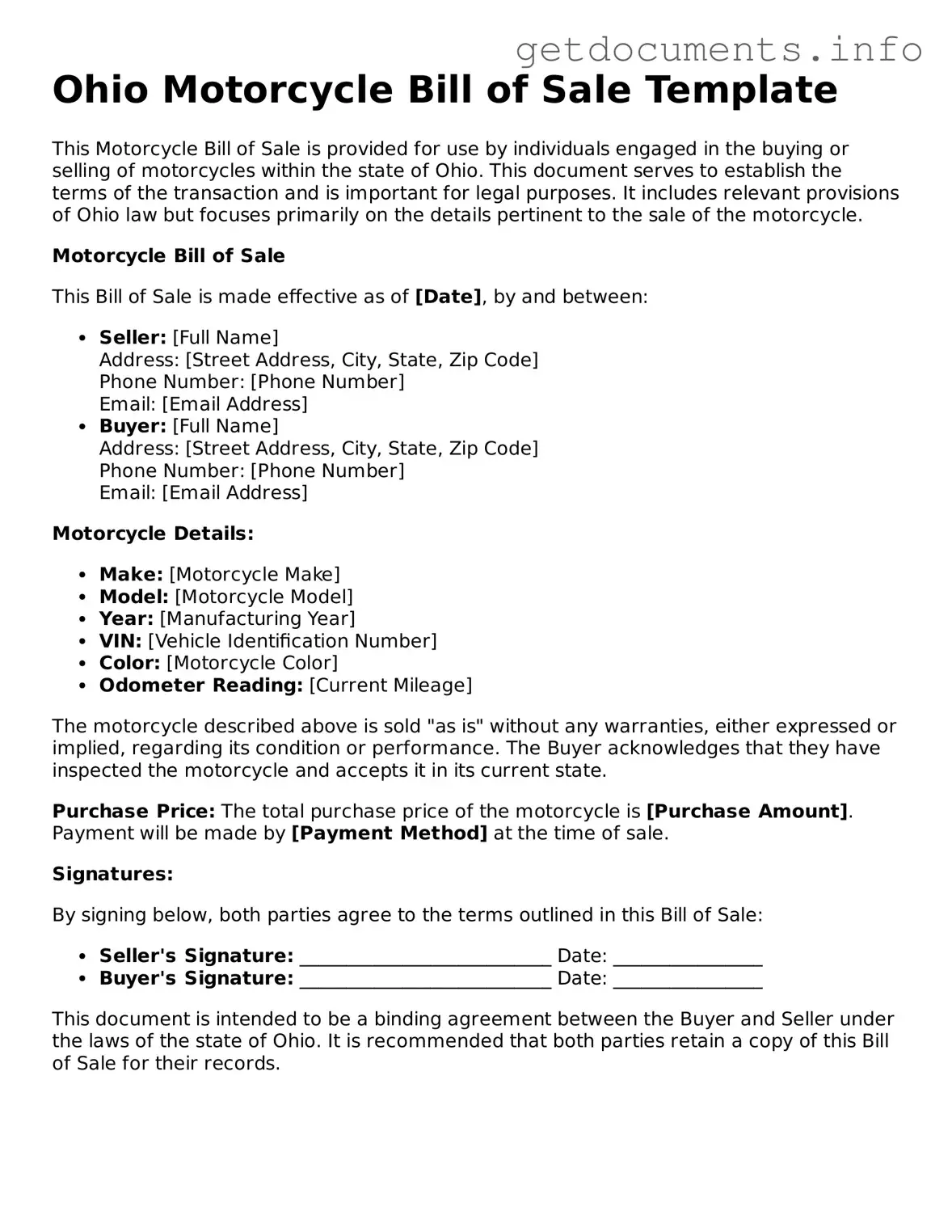When buying or selling a motorcycle in Ohio, a Motorcycle Bill of Sale form serves as an essential document to facilitate the transaction. This form captures key information about the motorcycle, including its make, model, year, and Vehicle Identification Number (VIN). It also records the names and addresses of both the buyer and the seller, ensuring that both parties are clearly identified. The bill of sale not only provides proof of ownership transfer but also outlines the sale price and any conditions related to the transaction, such as whether the motorcycle is sold as-is or with warranties. Additionally, it may include spaces for signatures, which are crucial for validating the agreement. By completing this form, both parties can protect their interests and create a clear record of the sale, which can be important for future reference, especially when registering the motorcycle or addressing any potential disputes. Understanding the components and significance of the Motorcycle Bill of Sale form is vital for anyone involved in such a transaction in Ohio.
